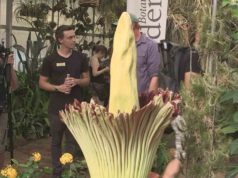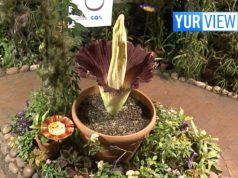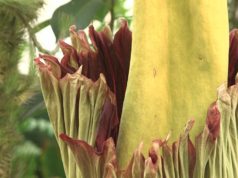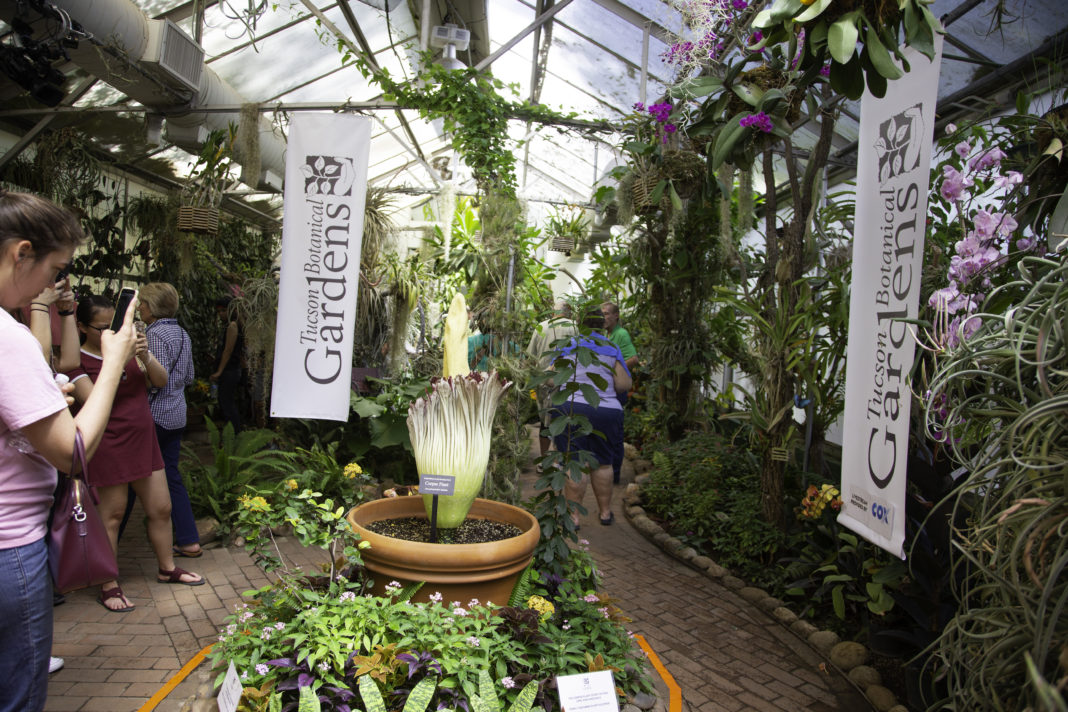
Last spring, the Tucson Botanical Gardens set the stage for a rare and unexpected visit from a bizarre and beautiful creature that made headlines and heads turn.
When a crowd of thousands is captivated by an unbearable aroma of rotting flesh, surrounded by tranquil sounds of nature in a horticultural paradise enchanted by the beauty of butterflies – this catatonic representation of life could only be indicative of one strange, offbeat fantasy.
Zombies.
Well, really just one zombie, in flower form, Amorphophallus Titanium, also known as Titan Arum, to be exact. Forget about science fiction and A.I. – A.T. is the new cool when it comes to plant science.
Rosie the Corpse Flower might have smelled like a pungent shadow of darkness, a wicked old piece of meat, a stinky body that had been dead for years – but in that stench a spotlight shined and this young star’s Internet fame and fandom was born.
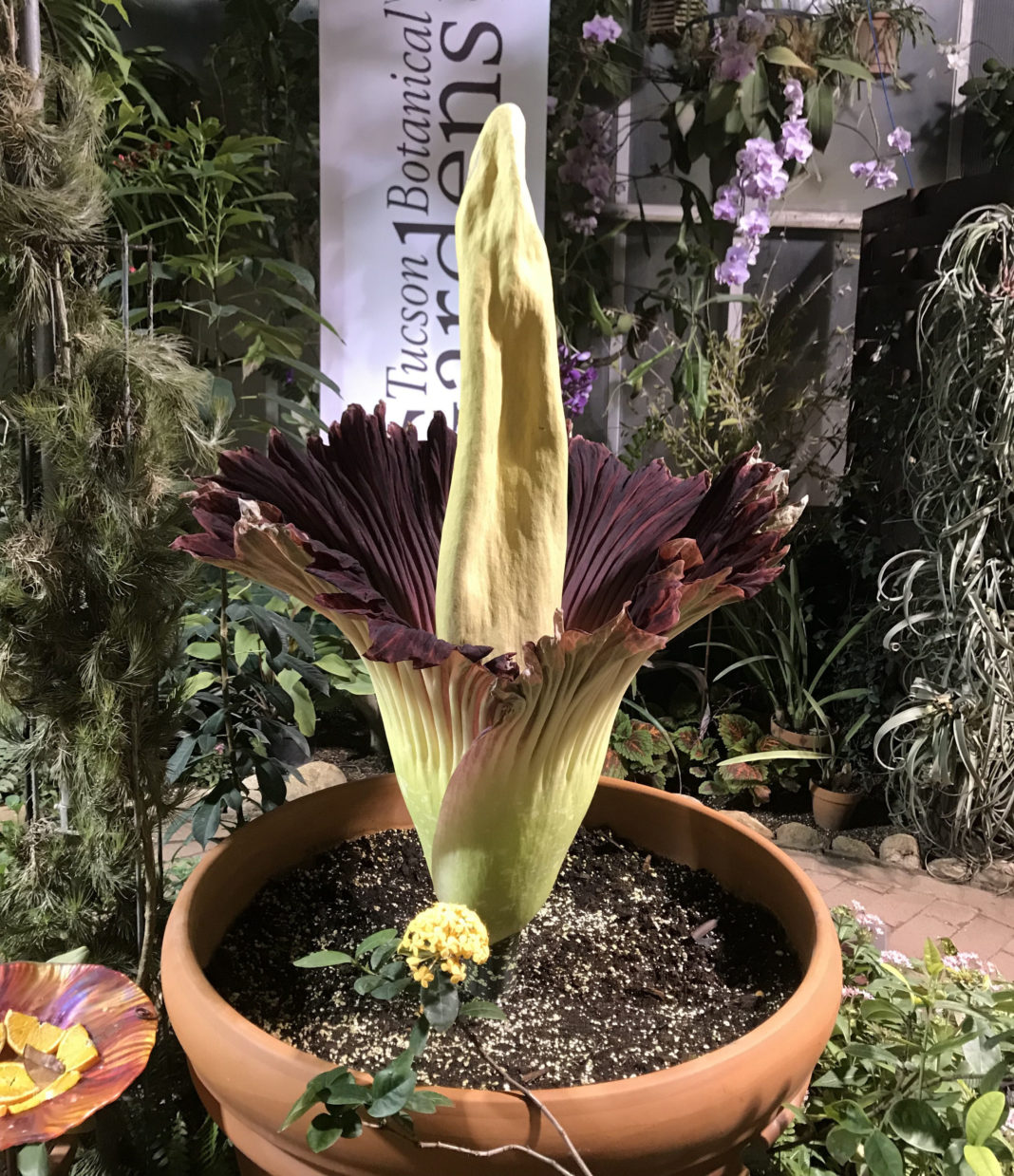
Butterfly exhibit manager Michael Madsen, also known as Mike the Ladder Guy, was front and center throughout the whole process.
“Rosie being the first Titan Arum to bloom on display in southern Arizona was a huge deal for a lot of people,” Madsen said. “Also, I’m not aware of any other corpse plant that has bloomed inside of a tropical butterfly exhibit; making our event even more interesting and unique.”
The ten-foot-tall, alien-like endangered species developed a cult following akin to pop stars and Sci-Fi films. YouTube gave the world Justin Beiber and YurView’s live stream delivered a platform for community celebration and commentary on another one of nature’s rare gifts.
Like all pop culture phenomena, Rosie even had merchandise to seal her place in the realm of celebrity worship. Artists Allison Seitz & Sugar Rat used their talents to pay homage to Rosie.
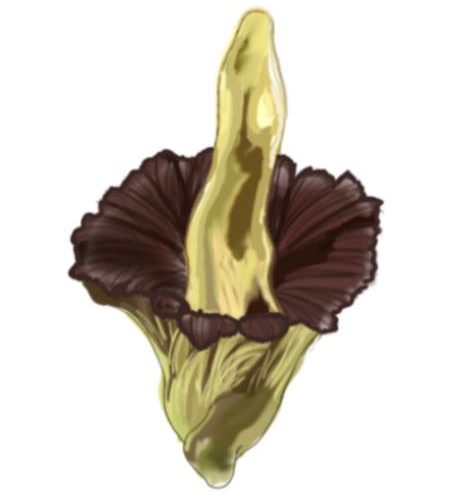
“It was fun to see how many people were excited about this cool little (big) plant’s progress,” Sugar Rat said.
Sugar Rat’s depiction of Michael and Rosie was made available on t-shirts and mugs. The proceeds went to benefit the Tucson Botanical Gardens.
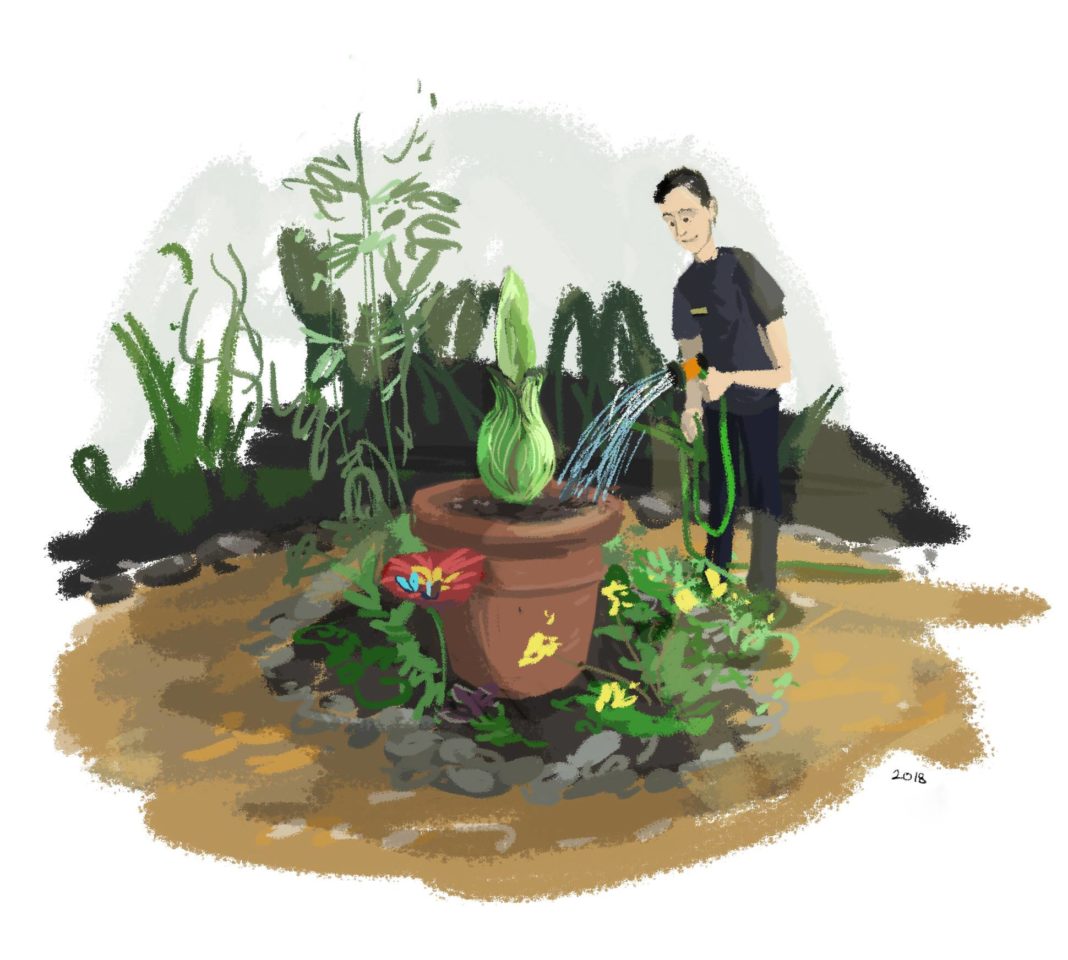
Today, those that bonded over Rosie’s bloom are in her corner, and online. Julie Baker created the 200+ member Facebook group that kept the party going long after the live stream ended.
“I started the Facebook group so that people could still interact,” Baker said. “Many of us watchers and chatters became very good friends!”
Kelly Green lives in Michigan and hopes to one day visit the Tucson Botanical Gardens in person.
“I enjoyed learning about the flower I had never heard of until Rosie,” Green said. “I joined the group, because the people who were in the chat were all so nice and felt like good friends!”
“The absolute best part of my whole experience is seeing how people came together and fell in love with this plant.”
Joniette Cameron called the group a family after bonding through a few days of live chatting. “It was awesome,” she said.
“We learned, we laughed,” Fellow group member Pearl Cope added, “We got over-protective over Rosie like she was a part of our family! How could we just let all of that go?”
Cope refers to a moment in the live stream when a curious fan went up and touched their floral ingénue. The crisis left all viewers gasping and anxious, worried that Rosie’s luscious beauty had been tainted or harmed.
“Still steaming over that one,” Nicole M. Caracciola added.
There’s an obvious scientific explanation for the infamous foul odor that epitomizes Rosie’s breed of plant. Don’t talk too much about her B.O. (botanical odor), though, or you might have to answer to one of her loyal followers.
“The reactions of the YouTube live group were great,” Melinda Hullett added. “The absolute best part of my whole experience with the whole thing is seeing how people came together and fell in love with this plant.”

Rosie stinks because Mother Nature made her that way – it helps lure beetles and bugs for pollination. Still a puzzle is the pull the enigma has had on human beings far and away.
“I was expecting thousands of visitors on the day that Rosie bloomed, but the actual guest turnout was much higher than I had imagined,” Madsen said. “The attention received both nationally and internationally was completely unexpected and a very welcome surprise!”
Madsen embraced his role in the live stream and even coined the popular phrase, Float like a butterfly, stink like a Rosie. Thousands of enamored folks were glued to their computer screens, watching Rosie’s every move. The live stream was viewed in 187 countries around the world.
“I just cannot get interested in other Corpse Plants. I feel like Rosie is the one and only for me.”
“I didn’t want to forget Rosie,” Kelly Howard said in reference to her joining the Facebook group. “Love the positive vibe of the group and how many wonderful people are here, just because of a plant.”
Perhaps Rosie’s fans will stay inexplicably connected, forever, as if sharing a close encounter of the botanical kind.
“My friends and family all laughed at me that I was glued to the live stream. I joked with them I was literally watching grass grow,” Lex Chase confessed. “Not going to lie, I totally cried when she bloomed.”
Merely watching and reading about Rosie was enough to link people that would have never communicated otherwise. Many are happily mystified by their infatuation and love for the A.T., and these abstract flower fans have no problem in putting the truth out there.
Could it be just a matter of time before someone erects a Rosie-shaped sculpture out of mashed potatoes, much like the scene made famous by Richard Dreyfuss’ character in the popular Spielberg film, Close Encounters of the Third Kind?
“As for me,” Brenda Geisler Taylor said, “I just cannot get interested in other Corpse Plants. I feel like Rosie is the one and only for me.”
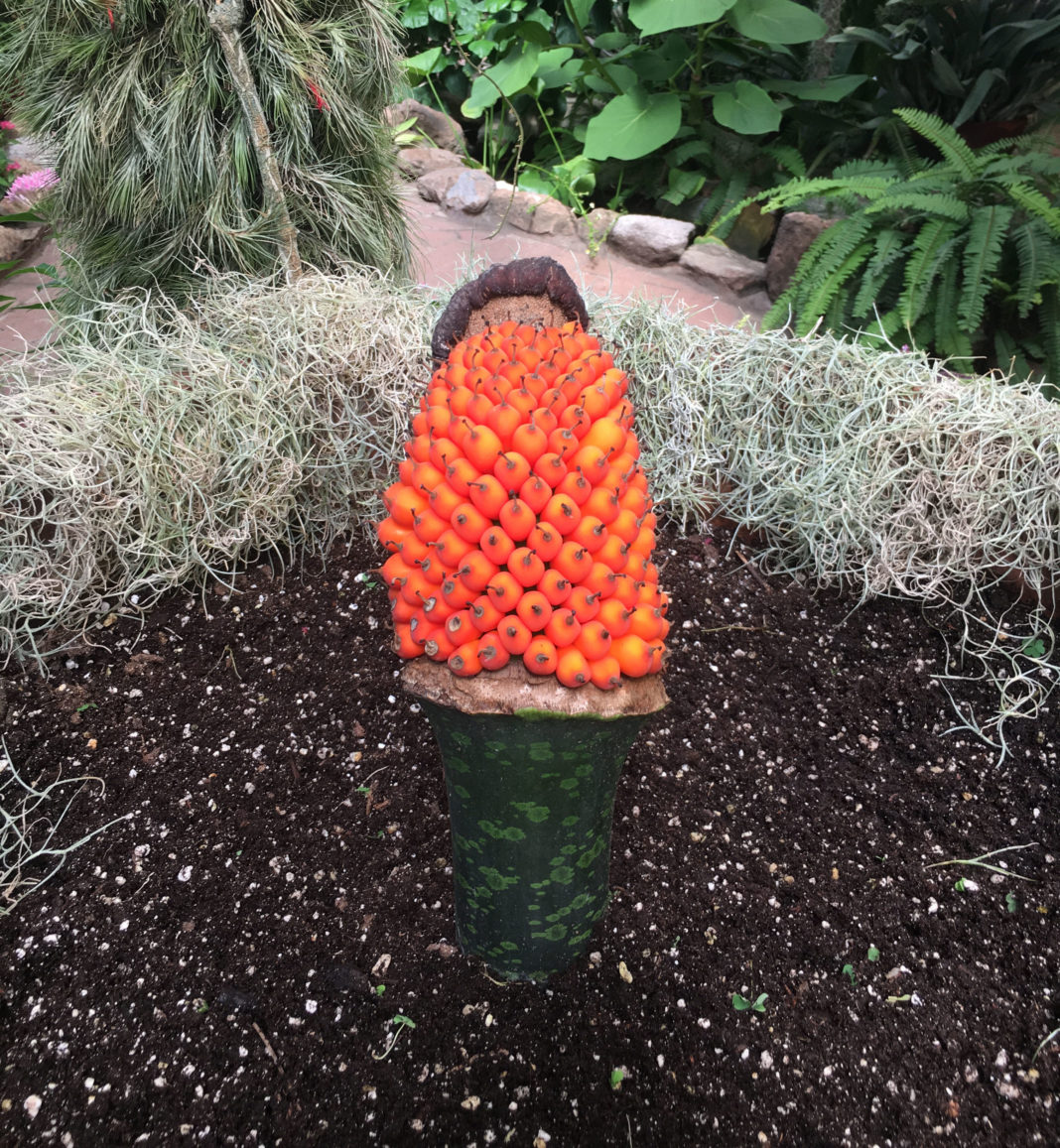
Madsen said that corpse plants at other botanical gardens in the country seem to bloom every 2-3 years like clockwork. Because Rosie is young and the blooming is such an energy intensive process, there is a good chance it could take her a longer time. The corpse flower is generally a very slow blooming plant.
“Rosie could bloom again as soon as 2020, but it would be much more realistic for the plant to go through several growth cycles to store more energy,” Madsen remarked. “After all, the more energy Rosie stores, the bigger its inflorescence can grow during the next bloom!”
Luckily for her fans, Rosie is producing fruit and will be on display in the Cox Butterfly and Orchid Pavilion through the remainder of 2018 until she returns to a dormant state. Even in hibernation, though, it seems safe to assume Rosie’s followers will still be buzzing about her next tour as they eagerly await her return to the spotlight.
Until then, mashed potato sculpting doesn’t seem like all that bad of a hobby.


